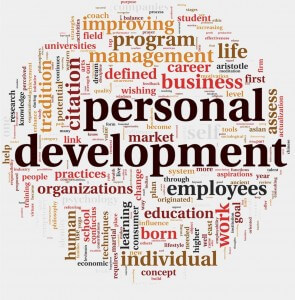
Everyone who follows this blog knows that I tend to take a softer approach to training that at times may not seem as traditional or as typical of the training principles you are taught in school. I also don’t tend to weigh my page down with off-the-shelf products, although guest writers are more than welcome to do so as long as they write generically about all such products. This blog is not to promote, but to share training ideas and best practices.
Putting people first is a part of any training for me, but there is a business side to it as well that we cannot ignore. Our clients are profit-oriented unless they are non-profit, but they too are still looking at the bottom line.
Training and development in any organization require a training strategy to achieve success and a method to make it happen (or implementation). We agree our leaders (as well as our trainers must have vision, focus, and direction, and it only makes sense to put it in an action planning document.
Does that mean it is written in stone? I don’t think so, but it will remind us all of where we started and where we should be at all times. Should that change at any time, or should we change that statement to conform with our new vision, direction, focus, etc. immediately? Of course not. Changes to the plan shouldn’t happen whimsically, but only with great thought and discussion.
Without a training strategy or an action plan we do not have a mechanism that establishes all our means to achieve these grandiose goals, which is what they are if they are not formalized in some way Therefore, the strategy will require vision, focus, direction, and an action planning document.
A Training and Development Strategy is a mechanism that establishes what competencies an organization requires in the future and a means to achieve them.
- Having it in writing somehow makes it an indelible ink for the corporate culture letter and a motif for the corporate culture in general.
- Still, another good reason is that a plan is always good. It may be a trite saying but it says it best: anything worth achieving, is worth planning for!
- To know how your product or service will be used and how it will affect others before you develop it–that’s planning for the future.
- Studies have shown that with a training strategy, your productivity improves when just about any corporate spending had a plan.
- Many points can be put forward in favor of why you need a training strategy as long as it is related to that plan–even morale.
As part of an effective Strategic Training and Development Plan, you will need detailed versions of the following:

- Corporate/Organizational Vision
- Executive Mentoring
- Team Development and Team Building
- Management and Leadership Development, (not all agree with management as a part of this, but not all management are leaders)
- Competency Requirements and Skills Profiling,
- Objectives and Action Plans,
- Employee Training and Train-the-Trainer needs.
How do these items fit with the Big Five: Equity and Diversity, Organization (and Personnel) Values, Business Process (and Personal) Improvement, Change Management (and Personnel Adjustment), and Organizational Design and Structure?
Traditional approaches identify the customer’s training needs in terms of their organizational strategic plan, compare it with Human Resources’ strategic plan, focus on comprehensive interviews or focus groups, and see how it all meshes with personal development plans.
I would argue to keep personal development plans in the forefront rather than last because personnel matters like personal development plans tend to get lost or given short shrift in favor of the bottom line. People are an invaluable resource–more important than most managers and leaders seem to know when it comes to helping the company get behind in productivity. Don’t forget, these are the same people who may be on the ground floor hearing what you are not. Ignore them or treat them like dogs and they may bark and bite instead of being your best friend.
Now back to business.
So how do you keep an eye on things? More planning. This is actually your Strategic Plan for Training and Development. It is the bigger picture. As on the battlefield, a strategic battle includes many tactical units like those below that help implement or make happen the bigger plan happen.
- Establish corporate/organizational development needs, present and future,
- Set organizational training objectives,
- Examine your personnel records with an eye for additional or missed talent to be part of your new training plan, (I find it useful to interview people who expressed an interest in training to become a part of the group during this time; their insight can be amazing.)
- Create a training action plan to make sure that you have the necessary systems in place, that you can access resources, and other sources deemed appropriate, or design training and position it in time for use.
- Deliver the training by any number of appropriate methods determined by value and cost-effectiveness.
- Monitor the training value as well as employee needs and satisfaction,
- Evaluate the training by assessment and sustainability overtime, and
- Revise training and/or training plan if needed, with a plan for making immediate changes to the training itself.
Don’t develop any plan, especially a Strategic Plan for Training and Development, if you aren’t going to use it.
Naturally, training is only as good as your corporate or organizational leadership is willing to support it. Get their buy-in first. Make sure you have it worked out to the fullest and it is a win-win. Know what kind of leader your boss is. Some are more impressed by numbers, so find them and give them to him or her. Find other companies where this kind of program has made a difference and give him its statistics. If he or she craves the love of his or her people demonstrate how this plan will make everyone one big happy family. Obviously, if the boss is a very ordered kind of person he or she will love this plan. I think you get the idea.
As for marketing this for company support, make sure you have done your homework, i.e., products and services will benefit how? How much? By when? What is this plan going to cost? In the long term? What about outsourcing trainers? I don’t like that idea. Where is the money going to come from? Not my budget! Be ready to anticipate and answer all the questions. Be ready to adjust. Most of the officers will want to make adjustments. Just keep your customers in mind, cost for value received, establish roles and responsibilities, (you don’t want people pointing fingers in a time of crisis so plan early), and give your training plan a slogan–something related to the company vision; it’ll help keep everyone on the same page. And with any luck, you’ll have an up-and-running plan that works.
See, I told you I can organize it.
As for a good and reasonable, different source on how to do a basic needs assessment, check out this link: http://www.dirjournal.com/guides/how-to-conduct-a-training-needs-analysis/
For more resources about training, see the Training library.
A final reminder: I do have a website where you can find other items I have written, including my best-selling, The Cave Man Guide To Training and Development, and information about my novel about the near future, Harry’s Reality! Happy Training.
 Sections of this topic
Sections of this topic
















